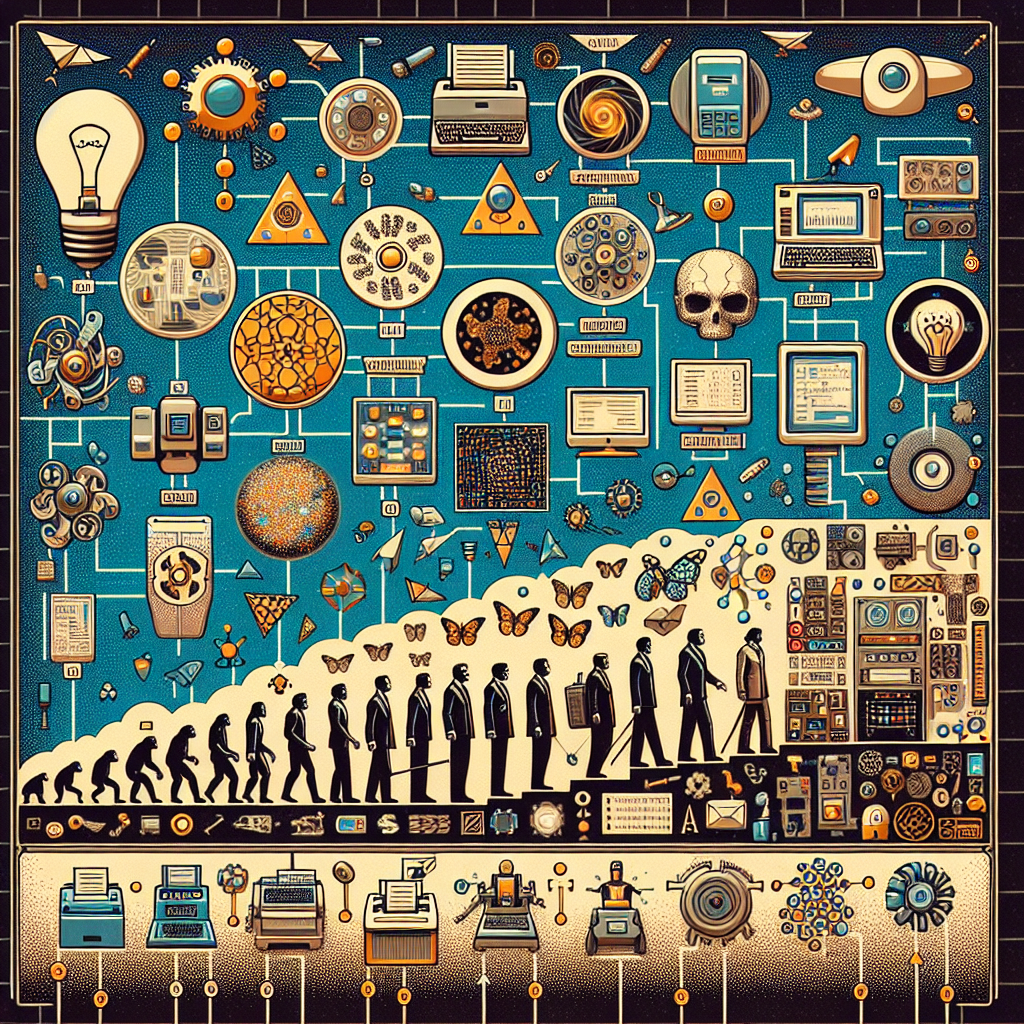Natural Language Processing (NLP) is a field of artificial intelligence that focuses on the interaction between computers and humans using natural language. It involves the development of algorithms and models that enable computers to understand, interpret, and generate human language. NLP has a long and rich history that dates back to the 1950s, and has seen significant advancements over the years.
The history of NLP can be traced back to the 1950s, when researchers began exploring the possibility of using computers to process and understand human language. One of the earliest examples of NLP can be seen in the work of Alan Turing, who proposed the Turing Test in 1950 as a way to determine if a machine could exhibit intelligent behavior indistinguishable from that of a human. While the Turing Test focused on general intelligence rather than language specifically, it laid the foundation for further research in NLP.
In the 1960s and 1970s, researchers began developing early NLP systems that could perform basic tasks such as language translation and information retrieval. One of the most notable early NLP systems was SHRDLU, developed by Terry Winograd in the late 1960s. SHRDLU was a program that could understand and respond to commands in a block world environment, demonstrating the potential for computers to interact with humans using natural language.
In the 1980s and 1990s, NLP saw significant advancements with the development of more sophisticated algorithms and models. One of the key milestones during this time was the introduction of statistical methods for NLP, which enabled researchers to train models on large amounts of text data to improve performance. This led to the development of techniques such as part-of-speech tagging, named entity recognition, and syntactic parsing, which are still widely used in NLP today.
The 2000s brought about a new era of NLP with the rise of deep learning and neural networks. These technologies enabled researchers to build more complex models that could learn from large amounts of data and make more accurate predictions. One of the most significant advancements during this time was the development of word embeddings, such as Word2Vec and GloVe, which allowed researchers to represent words as dense vectors in a high-dimensional space, capturing semantic relationships between words.
In recent years, NLP has seen even greater advancements with the introduction of transformer models, such as BERT and GPT-3. These models have revolutionized NLP by enabling researchers to build larger and more powerful language models that can generate human-like text and perform a wide range of NLP tasks with unprecedented accuracy. The introduction of transformer models has also led to the development of new techniques such as zero-shot learning and few-shot learning, which allow models to generalize to new tasks with minimal training data.
Today, NLP is used in a wide range of applications, from virtual assistants such as Siri and Alexa to machine translation systems like Google Translate. NLP is also being used in healthcare, finance, and other industries to analyze and extract insights from large amounts of text data. As NLP continues to evolve, we can expect to see even more advancements in the field that will further improve the way computers interact with humans using natural language.
FAQs:
1. What are some common NLP tasks?
Some common NLP tasks include:
– Sentiment analysis: Determining the sentiment or emotion expressed in a piece of text.
– Named entity recognition: Identifying and classifying named entities such as people, organizations, and locations in a text.
– Part-of-speech tagging: Assigning grammatical categories (such as noun, verb, adjective) to words in a text.
– Machine translation: Translating text from one language to another.
– Text generation: Generating human-like text based on a given prompt.
2. What are some challenges in NLP?
Some challenges in NLP include:
– Ambiguity: Natural language is inherently ambiguous, making it difficult for computers to accurately interpret and generate text.
– Data scarcity: NLP models require large amounts of training data to perform well, which can be a challenge for languages with limited resources.
– Domain-specific knowledge: NLP models often struggle with understanding text in specialized domains such as medicine or law, where domain-specific knowledge is required.
– Bias: NLP models can inadvertently learn and propagate biases present in the training data, leading to biased or unfair predictions.
3. What are some future trends in NLP?
Some future trends in NLP include:
– Multimodal NLP: Integrating text with other modalities such as images, audio, and video to enable more diverse and expressive communication.
– Few-shot and zero-shot learning: Developing models that can learn new tasks with minimal training data or no training data at all.
– Explainable AI: Making NLP models more transparent and interpretable to improve trust and accountability.
– Continual learning: Enabling NLP models to learn and adapt to new data and tasks over time to improve performance and generalization.
In conclusion, the history of NLP is a testament to the remarkable progress that has been made in the field over the past several decades. From early systems like SHRDLU to modern transformer models like BERT and GPT-3, NLP has come a long way in enabling computers to interact with humans using natural language. As NLP continues to evolve, we can expect to see even more advancements that will further improve the capabilities of NLP systems and revolutionize the way we communicate with machines.

